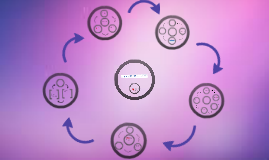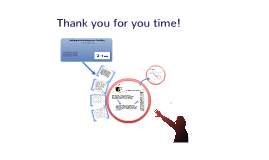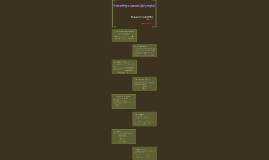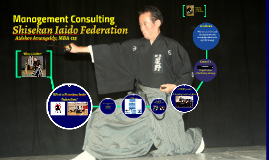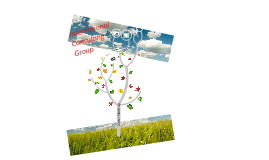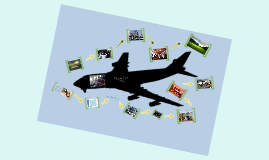Management Consulting
Transcript: Mathematics (MCV4U, MHF4U) English and French (ENG4U, FSF4U) Economics (IB) Business (Accounting) (BAF3M) World Geography - Law & World Issues (IB) Undergraduate: $70,000-75,000 MBA: $160,000-$200,000 Engagement Manager/Project Leader: $175,000-$250,000 Associate Principal/Senior Project Leader: $250,000-$400,000 Partner/Principal: $500,000 - $800,000 Senior Partner/Director: $1,000,000 plus Senior consultant salaries increasingly performance based Bonuses "Perks": benefits (e.g. insurance), retirement contributions, expense accounts, travel benefits Employability Skills Matches skills and interests assessments (#4/A on Career Cruising) High scores in interpersonal and communication skills; good academic skills Allows me to travel Able to help companies and employees (values) "Doctor of Enterprise" - learning curve, challenges (values) Teamwork oriented workplace (values) Post-Secondary Pathway Manage information - foundation of entire job Management consultants are hired to synthesize information from a variety of sources As part of information management, analyze data to come up with a written report (conclusion) Why this Career? "1122 Professional Occupations in Business Services to Management." http://www5.hrsdc.gc.ca/noc/english/noc/2006/ProfileQuickSearch.aspx?val=1&val1=1122&val65=* . 13 November 2009. Gao, Kevin. "Management Consulted." http://managementconsulted.com/. 2010. "Career Cruising." http://www.careercruising.com/Default.aspx. 2010. "JobFutures - Professional Occupations in Business Services to Management." http://www.jobfutures.ca/noc/1122p3.shtml. 31 March 2007. "Professional Occupations in Business Services to Management (NOC 1122-A)." http://www.workingincanada.gc.ca/report-eng.do?action=final&area=9219&noc=1122&province=35. 12 July 2010. "ONWin." http://www.onwin.ca/english/index.cfm?fuseaction=view_subcategories&CategoryID=1. "Labour Market Information." http://www.labourmarketinformation.ca/standard.aspx?pcode=lmiv_main&lcode=e, 31 December 2008. "eINFO." http://www.electronicinfo.ca/en/, 2010. "McKinsey & Company." http://www.mckinsey.com/, 2010. "Bain & Company." http://www.bain.com/bainweb/home.asp, 2010. "Boston Consulting Group." http://www.bcg.com/, 2010. Very competitive field - firms hire only the top students of the top business programs. Established firms are only employers ("all or nothing") Undergraduate recruiting huge question mark Difficulty of attending business school - admissions and finances Workload and overtime - huge commitment Similar Careers: Corporate Lawyer Financial Analyst Chartered Accountant / Auditor Commercial Banking / Capital Markets Human Resources Specialist Transferable Skills Management Consulting Working Conditions What is it? - Job Description Other skills: communicate, work with others Potential Obstacles High School Plan N.O.C. number 1122.1 Helping organizations improve their business using analysis of existing business problems External, objective advice Specialized knowledge Client presentations and meetings Do research, write-ups, analysis of business; come up with solution Develop plans for improvement and advice with team Thanks for watching! Average Salaries Academic Skills - literacy, computer proficiency, mathematics (finance), research all needed to succeed in this job Finding solution incorporates all of the above elements Others include: communication skills and organizational skills Trends Bachelor's degree in business or related field University with extensive recruiting, career services (Ivey - UWO) ENG4U + two maths. Top six average ~ 90%+ Work 2-3 years in entry level position Business school (MBA) - 2 years MBA-level hire - officially a consultant Earn Certified Management Consultant (CMC) accreditation - must have two sponsors, complete several courses, and pass two exams (2-3 years) Cited Works Future Employment Prospects Employment growth rate above average Companies continue to seek expertise in order to be competitive and contract out business operations. Retirement rate above average; more job openings. Job seekers match number of job openings Pursue career with confidence; high chance of employment More competitive if specialization is in information/technology management, healthcare, biotech, human resources Employed by consulting firms; some are self-employed Hired by variety of for-profit and non-profit businesses, as well as governments Junior consultants spend most of the time in the office for research and analysis At higher levels, regular travel is expected (both short and long distances) Long hours (50-60 hours/week); weekend work Must finish projects by deadlines Globalization will play large part, as international business knowledge becomes more and more important Must be able to work with companies all over the world (i.e. MNC, Asia) Flexibility - local markets, local cultures Others include "computers everywhere," "small businesses grow big"






